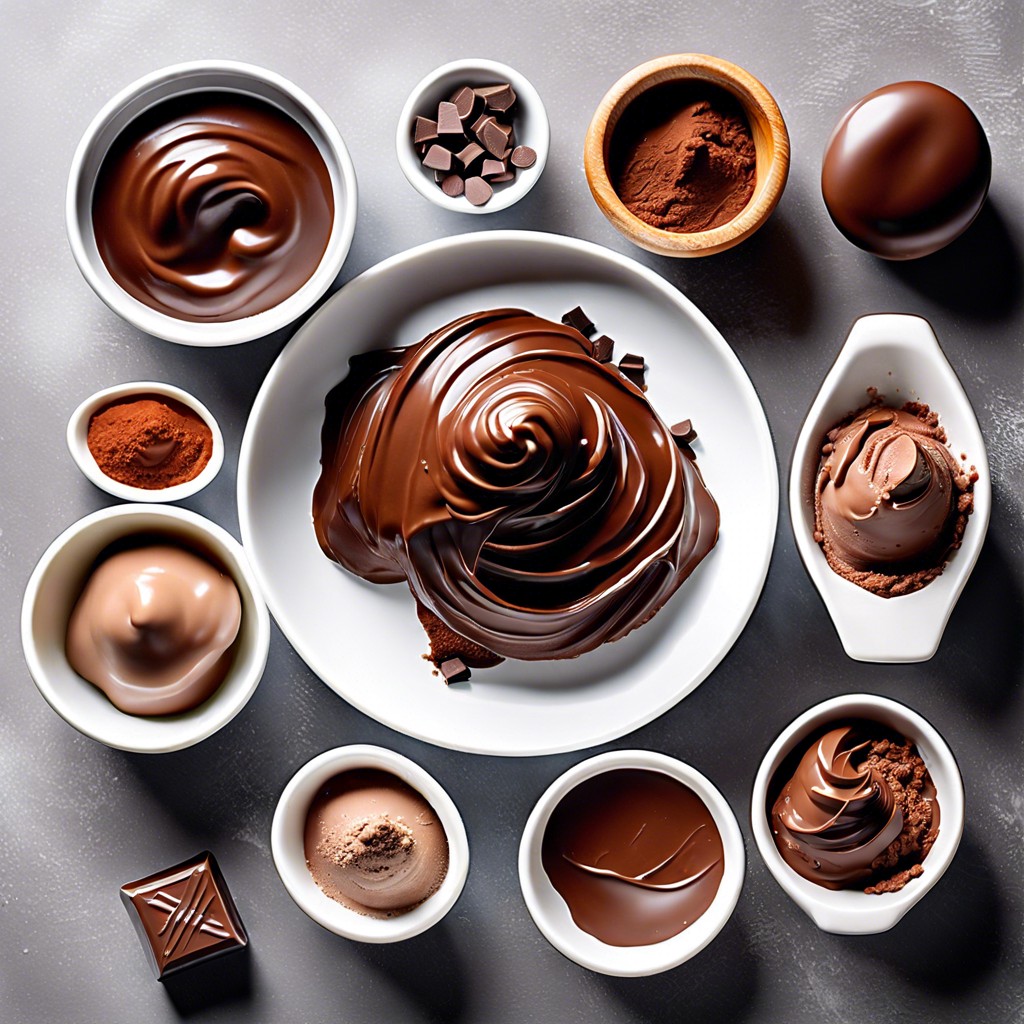Learn how to make smooth, rich chocolate frosting that will elevate any cake or cupcake.
Key takeaways:
- Smooth, rich chocolate frosting elevates any cake or cupcake.
- Basic ingredients: powdered sugar, cocoa powder, butter, milk/cream, salt.
- Step-by-step guide: sift sugar and cocoa, cream butter, gradually add sugar-cocoa mix, slowly pour in milk, add vanilla extract.
- Tips: room temperature butter, sift cocoa and sugar, gradually add milk, pinch of salt.
- Common mistakes: overheating chocolate, adding too much liquid, using cold butter, overmixing, skipping sifting.
Inside
Basic Ingredients Needed for Homemade Chocolate Frosting

Chocolate frosting requires just a few foundational components. Powdered sugar acts as the sweet base, while cocoa powder provides the rich chocolate flavor. For a smooth and creamy texture, butter is essential. Milk or cream is added to adjust the consistency to the desired level. Finally, a pinch of salt can enhance the overall flavor, balancing the sweetness. Additionally, for bolder tastes, vanilla extract or espresso powder can be included to complement the chocolate’s depth. These ingredients together create a delightful complement to a variety of baked goods.
A Step-by-step Guide to Making Classic Chocolate Frosting
Begin by sifting 1 and 1/2 cups of powdered sugar to eliminate any lumps; this ensures a smooth frosting. In a separate bowl, mix 1/4 cup of unsweetened cocoa powder with the sifted sugar. This combination creates the rich chocolate base.
In a mixer, cream together 1/2 cup of unsalted butter, which should be at room temperature for easier blending. Gradually add the sugar-cocoa mix to the butter while continuously beating. This gradual mixing prevents clumping and incorporates air, making the frosting fluffy.
For a creamy texture, slowly pour in 3-4 tablespoons of milk while mixing at a medium speed. The milk helps to thin the mixture and smooth it out. Adjust the milk quantity depending on the desired consistency.
Finally, add a teaspoon of vanilla extract for flavor. Mix until all ingredients are well combined and the frosting has a light, spreadable consistency. Use immediately or cover and refrigerate if using later, allowing it to come to room temperature before spreading.
Tips for Achieving the Perfect Texture and Flavor
Achieving the ideal texture and flavor in chocolate frosting is all about balance and technique.
First, make sure your butter is at room temperature before you start mixing. This prevents lumps and ensures a smooth, creamy consistency.
Second, sift your cocoa powder and powdered sugar before adding them to the mix. This step avoids any grittiness and helps distribute the chocolate flavor evenly.
While mixing, add your milk or cream gradually. Rushing this step can cause the frosting to split or become too runny. Aim for a slow blend to maintain control over the consistency.
Lastly, a pinch of salt enhances the chocolate taste, cutting through the sweetness and bringing out rich, deep chocolate notes. This little addition makes all the difference.
Take your time, keep these tips in mind, and soon you’ll be delighting in the perfect spread for your cakes and treats.
Common Mistakes to Avoid When Making Chocolate Frosting
Overheating the chocolate can result in a grainy texture. Gently melt the chocolate over low heat or in short bursts in the microwave, stirring frequently to ensure even distribution of warmth.
Adding too much liquid makes the frosting runny. Start with a small amount of cream or milk and only add more if the mixture is too stiff after thoroughly combining all ingredients.
Using cold butter can cause lumps. For smooth frosting, ensure your butter is at room temperature before you start mixing.
Overmixing the frosting can incorporate too much air, making it too light and fluffy for some types of cakes and decorations. Mix just until the ingredients are well combined and the frosting is smooth.
Skipping the sifting process might leave you with a lumpy frosting. Always sift the powdered sugar to avoid unwanted clumps and achieve a creamy texture.




